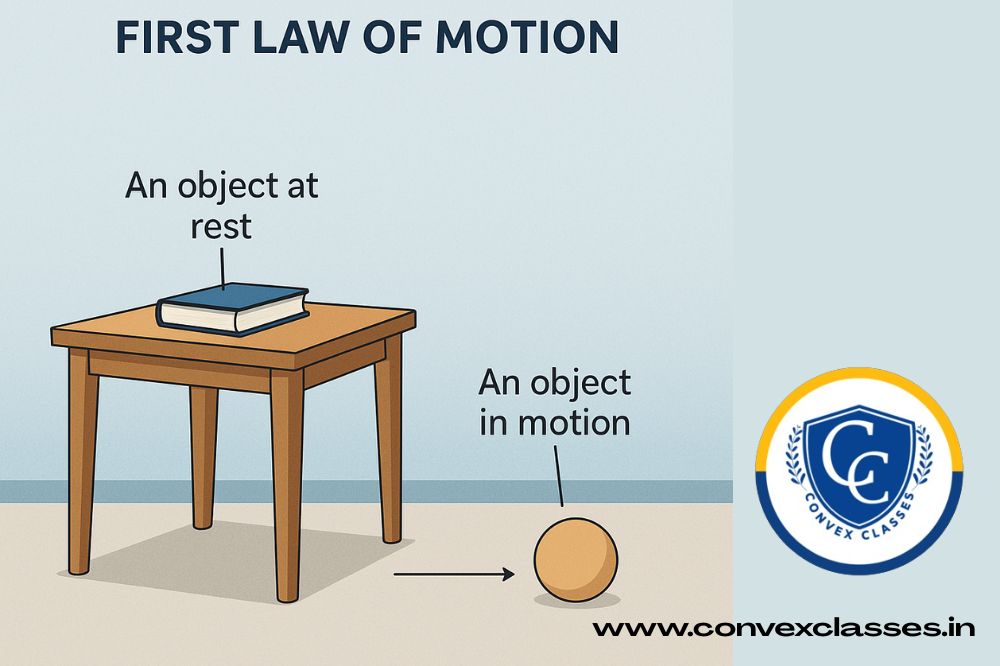What Is Newton’s First Law of Motion?
A body at rest stays at rest, and a body in motion continues in a straight line at constant speed unless an external force acts on it. This principle is also called the Law of Inertia.
Understanding Inertia in Simple Terms
- Inertia is an object’s tendency to resist any change in its state of rest or motion.
- The greater the mass, the greater the inertia—you need more force to move or stop heavier objects.
Everyday Examples to Remember
- A book on a table won’t move unless you push it (no force means no motion).
- When a car suddenly stops, passengers lurch forward (their bodies want to keep moving).
- Dust falls off a beaten carpet because the carpet moves but dust stays at rest.

Why It Matters for CBSE Exams
- It defines the concept of force: force is what changes an object’s motion.
- Inertia links directly to mass—key for answering numerical and theory questions.
- Clear examples make it easy to describe in long-answer and viva voce.
Quick Recap
- Law of Inertia = no unbalanced force, no change in motion.
- Mass measures inertia.
- External forces (friction, push/pull) alter motion.
Frequently Asked Questions
Why is the first law called the Law of Inertia?
Because it describes how objects resist changes in motion.
Does a moving object need a force to keep moving?
No—only forces like friction or air resistance slow it down.
How does mass affect inertia?
Heavier objects have more inertia and need more force to move or stop.




